Simon Thomas, Jean Charles, born in 18-04-1881 at Alkmaar  into a Lutheran doctor’s family of well-known gynecologists, Against family tradition, he did not choose a career in medicine, but enrolled in the Royal Military Academy.
into a Lutheran doctor’s family of well-known gynecologists, Against family tradition, he did not choose a career in medicine, but enrolled in the Royal Military Academy. 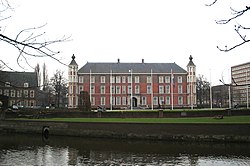
 After serving several years in the infantry and cavalry, Lieutenant Simon Thomas became part of the Aviation Department at Soesterberg Airfield in 1916. For fourteen years, Simon Thomas was the first leader of the airborne observer training and closely involved in building up Dutch military aviation. In 1930, Simon Thomas retired from active service and settled in Nijmegen. With the growing threat of war, in 1939 Simon Thomas was appointed air park commander of Waalhaven Airfield
After serving several years in the infantry and cavalry, Lieutenant Simon Thomas became part of the Aviation Department at Soesterberg Airfield in 1916. For fourteen years, Simon Thomas was the first leader of the airborne observer training and closely involved in building up Dutch military aviation. In 1930, Simon Thomas retired from active service and settled in Nijmegen. With the growing threat of war, in 1939 Simon Thomas was appointed air park commander of Waalhaven Airfield  in the rank of reserve major observer. Simon Thomas remained unmarried throughout his life.
in the rank of reserve major observer. Simon Thomas remained unmarried throughout his life.
Waalhaven airfield had been the home base of the 3rd Fighter Wing, which had eleven Fokker G.I fighters,  since November 10-11-1939. In addition to three platoons of anti-aircraft machine guns and artillery from the 77th Battery Anti-Aircraft Artillery,
since November 10-11-1939. In addition to three platoons of anti-aircraft machine guns and artillery from the 77th Battery Anti-Aircraft Artillery,  Major Simon Thomas could count on the approximately 700-strong III Battalion of the Regiment Jagers, which had dug in and around the airfield armed with six heavy and nineteen light machine guns, among other things.The airfield grounds also contained two casemates for machine gun emplacements and one concrete bunker, which housed Simon Thomas’ command post. The German attack on Waalhaven airfield would be part of the Battle for the Maasbridges and the battle for the Moerdijk bridges. To enable a rapid penetration of the Vesting Holland, it was of vital importance to the German army command that these mentioned bridges would fall into German hands intact. The Waalhaven airfield would hereby serve as an entry point for further reinforcements. It was the 7. Fliegerdivision
Major Simon Thomas could count on the approximately 700-strong III Battalion of the Regiment Jagers, which had dug in and around the airfield armed with six heavy and nineteen light machine guns, among other things.The airfield grounds also contained two casemates for machine gun emplacements and one concrete bunker, which housed Simon Thomas’ command post. The German attack on Waalhaven airfield would be part of the Battle for the Maasbridges and the battle for the Moerdijk bridges. To enable a rapid penetration of the Vesting Holland, it was of vital importance to the German army command that these mentioned bridges would fall into German hands intact. The Waalhaven airfield would hereby serve as an entry point for further reinforcements. It was the 7. Fliegerdivision 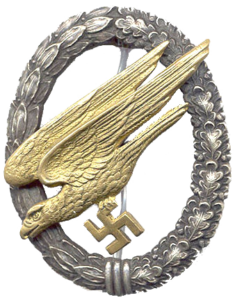 of Generalleutnant Kurt Arthur Benno “Papa” Student
of Generalleutnant Kurt Arthur Benno “Papa” Student 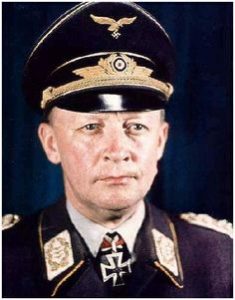
 which was given the task of capturing the bridges and the airfield.
which was given the task of capturing the bridges and the airfield.
At 03:55 on 10-05-1940, the first German Heinkel He-111 bombers 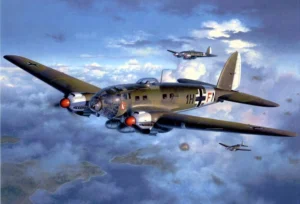 appeared over Waalhaven, strafing Dutch buildings and fighter positions. Shortly after 04:00 almost all the buildings of the airfield were ablaze, including the Koolhoven Aircraft Factory. Nevertheless, Simon Thomas managed to get eight Fokker G.I. fighters airborne and thirteen German aircraft were shot down. At about 05:00, 670 paratroopers from the IIIrd Battalion of the 1. Fallschirmjäger Regiment
appeared over Waalhaven, strafing Dutch buildings and fighter positions. Shortly after 04:00 almost all the buildings of the airfield were ablaze, including the Koolhoven Aircraft Factory. Nevertheless, Simon Thomas managed to get eight Fokker G.I. fighters airborne and thirteen German aircraft were shot down. At about 05:00, 670 paratroopers from the IIIrd Battalion of the 1. Fallschirmjäger Regiment  led by Hauptmann Karl Lothar Schulz
led by Hauptmann Karl Lothar Schulz  jumped out of their transport planes and began their attack on the airfield.Simon Thomas and the officers of the IIIrd Battalion of the Regiment Jagers had the greatest difficulty in mounting an organized defense against this German attack. Not only had the bombardment caused heavy damage to the defenses, the German paratroopers approached the airfield from all sides, attacking Dutch positions in the rear. Thus, a commission of inquiry concluded in 29-05-1940: “When landed paratroopers had gathered on the outside of the field and attacked the emplacements at the rear, also with hand grenades, they were unstoppable. By 06:00 German troops had taken control of most of the airfield. The command bunker of Simon Thomas and his staff was also completely surrounded, with German troops threatening to storm the bunker with grenades. A little after the stroke of 06:00, Simon Thomas concluded that further resistance was futile and surrendered with his staff and most of the remaining Dutch defenders. In addition to Major Simon Thomas, the Germans made some 400 Dutch soldiers at Waalhaven prisoners of war. Hauptmann Schulz survived the war and died 26-09-1972 (aged 65) in Wiesbaden, West Germany.
jumped out of their transport planes and began their attack on the airfield.Simon Thomas and the officers of the IIIrd Battalion of the Regiment Jagers had the greatest difficulty in mounting an organized defense against this German attack. Not only had the bombardment caused heavy damage to the defenses, the German paratroopers approached the airfield from all sides, attacking Dutch positions in the rear. Thus, a commission of inquiry concluded in 29-05-1940: “When landed paratroopers had gathered on the outside of the field and attacked the emplacements at the rear, also with hand grenades, they were unstoppable. By 06:00 German troops had taken control of most of the airfield. The command bunker of Simon Thomas and his staff was also completely surrounded, with German troops threatening to storm the bunker with grenades. A little after the stroke of 06:00, Simon Thomas concluded that further resistance was futile and surrendered with his staff and most of the remaining Dutch defenders. In addition to Major Simon Thomas, the Germans made some 400 Dutch soldiers at Waalhaven prisoners of war. Hauptmann Schulz survived the war and died 26-09-1972 (aged 65) in Wiesbaden, West Germany.
Death and burial ground of Simon Thomas, Jean Charles Marie.


In his haste to quickly break even the remaining Dutch resistance around the airfield, Hauptmann Karl Lothar Schulz flouted the rules of war. Under physical duress, Major Simon Thomas was forced by Schulz to sit on the bumper of a requisitioned car with a white flag. The car with Simon Thomas as a living shield passed several Dutch battle positions, where Simon Thomas was used to force Dutch troops to surrender. Among others at pier no.7 where the 77th Battery Anti-Aircraft Artillery was positioned, the Germans used this ruse to get the Dutch defenders to lay down their arms. Major Simon Thomas would suffer a minor heart attack as a result of this action. At about 10:30 a.m., the car containing four German paratroopers and Simon Thomas standing on the running board drove to Smitshoek, where the 4th Battery Anti-Aircraft Artillery under the command of Sergeant-Major-Flyer J.J. Buwalda was stubbornly resisting the German advance. Holding a white flag, Simon Thomas was sent toward Buwalda’s position to report that the German Hauptmann wanted to negotiate the Dutch surrender. However, Buwalda refused, after which a firefight broke out between the two sides. Major Simon Thomas, standing between the two camps, was almost immediately killed in the crossfire and fell to the ground. Buwalda later stated about this himself:
The major indicated that the remaining occupants wanted to negotiate with me. They were a Hauptmann or something and three others. All in camouflage and helmeted. The German officer then asked me to cease the resistance. I refused and asked the major to come to our side. At that moment all four Germans grabbed their pistols. These had been lying on their laps. They fired at me, but 25 meters is quite a distance, Moreover, I jumped aside. At that moment I saw Major Simon Thomas fall. The Germans were hit and killed before and after. One was badly wounded by a belly shot, but this one also died. Major Simon Thomas was laid by my men on a trestle in a farmer’s barn. I myself squeezed his eyes shut.
It was never made clear whether Simon Thomas died from his own fire or from German bullets. After a temporary grave his mortal remains were interred in the Military Field of Honor of the General Cemetery Crooswijk in Rotterdam. He was one of the highest-ranking Dutch soldiers who lost his life in the May days of 1940.


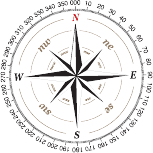















Leave a Reply